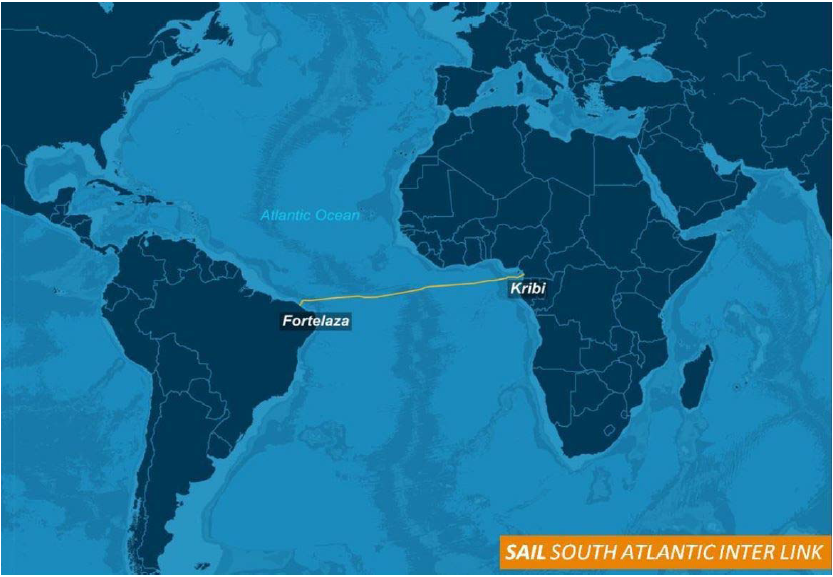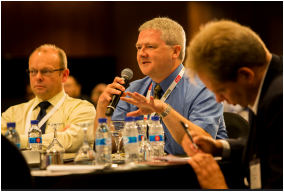|
Huawei Marine Networks has awarded Nexans the contract to supply 6,000 km of their second generation submarine Repeatered Optical Cables (ROC) for Phase II of the National Broadband Network (“NBNII”) project linking Cameroon and Brazil. This project will be Nexans’ first intercontinental project and will help to meet the growing data connectivity needs of the African and South American continents. Figure 13 - SAIL Cable Map Source: Huawei Marine Networks
The cable system will be manufactured and tested at Nexans’ Rognan factory in Norway with delivery completed by end of 2017. In 2015, Nexans in partnership with Huawei Marine delivered the Nigeria Cameroon Submarine Cable System (“NCSCS”) which constituted Phase I of Cameroon’s National Broadband Network development being developed for Camtel, Cameroon’s national telecom company. Krister Granlie, Executive Vice President, Hybrid Underwater Cables at Nexans said, “This contract cements the new era of Submarine Fibre Solutions (SFS) for Nexans, and reinforces our long relationship with Huawei Marine Networks.” “We have worked in close partnership with Nexans extensively since our inception in 2008, and after the success of Phase I of this National Broadband Network rollout, they were the natural choice for Phase II, our first trans-Atlantic project” said Mike Constable, Chief Executive, Huawei Marine Networks. Source: Nexans Press Release ANALYSIS: After Huawei Marine's (HMN) triumph in winning its first transoceanic cable installation project, albeit thanks to project funding from the Chinese government, Nexans will also be enjoying a few moments in the sun as they get to try out their repeatered cable offering over an ultra-long haul distance for the first time. It will be of particular satisfaction to Krister Granlie who took over management of Nexans' subsea business two years ago at a time when Nexans commitment to the optical market was somewhat in doubt. This project win will keep the Rognan plant open at least for a while longer. Nexans' ROC (Repeatered Optical Cable) was first deployed in 2009 on a route between Trinidad & Tobago, Guyana, and Suriname. This was also HMN's first outing as a turnkey supplier. The relationship between the two suppliers has therefore always been close. Furthermore, there has never been any evidence that the Nexans ROC has failed. Nevertheless, the SAIL project owners have chosen to go with a turnkey supplier that has never tested its dry and wet plant equipment over ultra-long haul distances except in the laboratory, and that supplier has chosen a cable which is also untested in a transoceanic setting. These are high risk stakes for both companies. Failure on a transoceanic system can be fatal to a company's prospects in the industry.
0 Comments
Leave a Reply. |
Julian Rawle, AuthorThought leadership articles and commentary on developments related to the subsea fibre optic cable industry can be found here. Archives
February 2018
Categories |




 RSS Feed
RSS Feed